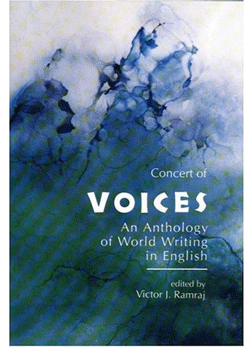Jan Carew’s ‘Fulcrums of Change’
THERE are many fascinating features about, and utilitarian services of, the National Library. One fascinating feature for me is the literary gems of Guyanese Literature to be found in the rural library centres located across the country, from Crabwood Creek to Mabaruma.  The National Library of Guyana was established in 1909 with funding provided by Andrew Carnegie, who in the 1880s set up a fund for the establishment of libraries all over the world. This National Library of Guyana was among the five libraries in the West Indies that was founded by that American philanthropist.
The National Library of Guyana was established in 1909 with funding provided by Andrew Carnegie, who in the 1880s set up a fund for the establishment of libraries all over the world. This National Library of Guyana was among the five libraries in the West Indies that was founded by that American philanthropist.
There are twenty-one library centres throughout the country, including at Crabwood Creek, Albion, and Woodley Park in the County of Berbice; Anna Regina, Bartica and Lethem, in the County of Essequibo; and Buxton, Mocha, Hague and Santa Mission in the County of Demerara.
On a recent visit to Santa Mission Library Centre, I found a number of rare books, including ‘Fulcrums of Change’ by Jan Carew. At first I was attracted to the book because of the author’s name — Jan Carew, whom I’ve written about on several occasions without mentioning this particular book, mainly because it was just a name stated by few bibliographies on the writer.
Jan Carew was born in September 1920 in a ward called Rome in the village of Agricola on the East Bank of Demerara, not far from where Roy Heath grew up. Carew grew up in New Amsterdam, rubbing shoulders with his relative, Wilson Harris; with Edgar Mittelhozer, A. J. Seymour and others.
His Demerara days (in the 1940s) were influenced by Cheddi Jagan, Martin Carter, Wilson Harris, Sydney King and others — days of resistance and literature.
The other features of the front cover that attracted my attention were the explanatory notes like ‘African Presence in the Americas’ and ‘Origins of Racism in the Americas and other Essays’.
It was difficult to avoid finding out more about the ‘African Presence in the Americas’, especially at this time when so much emphasis is being placed on the subject via the ‘Bicentenary of the Abolition of the Slave Trade’, the ‘International Year for Peoples of African Descent’, ‘A Decade for Peoples of African Descent’, and other such commemorative labels.
The blurb of the book also caught my attention, because I am familiar with the names of persons making comments — Ivan Van Sertima, A. Sivanandan, Sterling D. Plumpp and Dennis Brutus.
Duly induced, I turned to the Table of Contents. The first item here caused me to suspend my perusal of the detailed Table of Contents. That first item was the ‘Preface’, by Andrew Salkey.
This is what Salkey had to say about Carew; that Carew “believes, like Archimedes, the ancient Greek mathematician and inventor, whose classical, idealistic dictum is the starting-point of Carew’s historical essay, “Fulcrums of Change”, that if his Third World cultural and political propositions and commitments are afforded a secure place to stand on, their consequent beneficial actions will make a difference to the status quo, and move it towards revolutionary change.”
So Carew set out to examine two main fulcrums of change, as he explained “what we need to search for and discover as we rewrite the history of the Caribbean peoples are social, political, economic, historical and cultural fulcrums of change. For by discovering these, we can more easily bring the past back to life so that it can remain impregnated with the smell of the earth and the primordial dreams of the people.” (Archimedes’ dictum states, “Find me the fulcrum and I will move the world.”)
The book, ‘Fulcrums of Change’, according to the Table of Contents, is divided into three parts, namely:
Part One: Origins of Racism, which contains the following essays: ‘Columbus and the Origins of Racism in the Americas’, ‘Estevan: An African Soldier of Fortune in the Early Columbian Era’;
Part Two: Landscapes Within, which contains the following: ‘The Fusion of African and Amerindian Folk Myths’, ‘Exile’ – a poem, ‘The Caribbean Writer and Exile’, ‘The Third World: Its façade and its Landscapes Within’;
and Part Three: Fulcrums of Change, which include the following: ‘Suddenly Last Summer’, ‘Fulcrums of Change’ and ‘Harvesting History in the Hills of Bacolet’.
As I turn the book, ‘Fulcrums of Change’, over and over, physically and mentally, I thought of the work Joel Benjamin, Guyana’s remarkable bibliophile and bibliographer and others in that field, and wished for a miracle — that one day all the substantial books on Guyana would be stored under one roof in Guyana.
What’s Happening
• ‘Literature on Television’, comprising of ‘Oral Tradition’ and ‘Between the Lines’, is celebrating its 10th anniversary with the rebroadcast of some signal features including copyright, cultural industries, literary criticism, reading for pleasure, writers workshops, editing, and preparing manuscripts for publication (and literary prizes). Both programmes are aired on NCN; ‘Oral Tradition’ is on Wednesdays at 2035 hours and ‘Between the Lines’ – first Sunday each month at 2100 hours.
• You are invited to a symposium on copyright at Moray House, Camp and Quamina Streets, on Tuesday April 24, 2012, at 1700 hrs (5pm). Please contact me for further information.
• New Books: ‘The Comfort of All Things’ by Ian McDonald, ‘Beyond Revenge’ by Godfrey Wray, and two books of essays and interviews on and about David Dabydeen – ‘Talking Words’ and ‘Pak’s Britannica’.
(To respond to this author, either call him on (592) 226-0065 or send him an email: oraltradition2002@yahoo.com)



.jpg)











